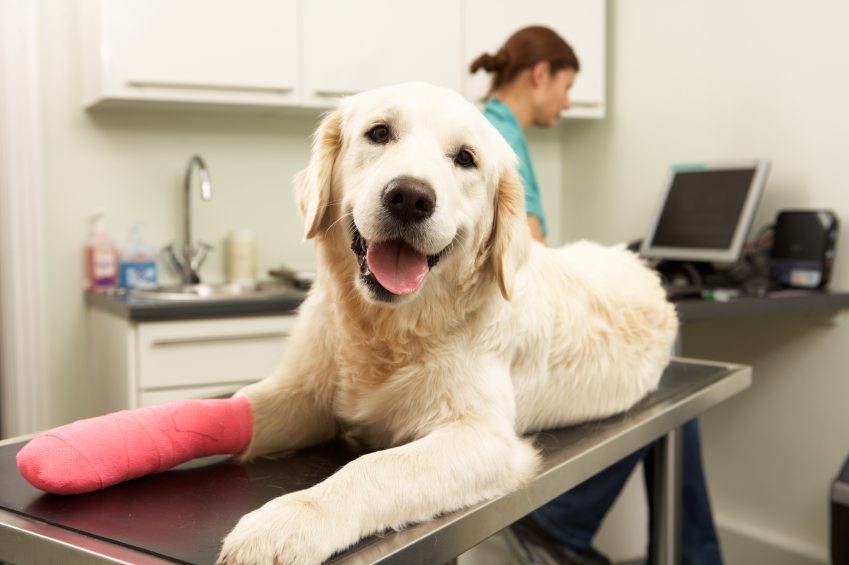
When your best friend gets a thorn in his paw, it can be painful for both of you. Dogs will try their best to forge ahead and not let on that they are hurt, but with a thorn in the paw, it will be hard for him to keep up. Here’s how you will know if your dog has a splinter or thorn in his paw and how to treat dog splinters.
The Limp
As you know, when you have a splinter in your foot, it makes walking a chore and you can’t help but favor the injured limb. Your dog will be the same, so if you notice difficulty walking, or licking and chewing on the paw, check the pads of your dog’s feet to see if you can spot the problem. Make sure to examine the paw in the best lighting possible. You may need to trim the hair a bit to see exactly what the trouble is.
See if you can spot the end of the splinter. It will be much easier to remove if it is not fully embedded. The paw will be sore and your dog will probably be skittish about you touching the injured paw. If you can enlist some help, have someone else hold and stroke the dog to keep him calm. It will help to have another pair of hands to hold the foot as you try to pull the splinter out.
A Thorn in the Flesh
The paw is not the only place where splinters can enter the body. Your pup could well have a splinter in another part of the body, such as the leg or the side. The process is the same as far as detection is concerned. If you see your dog licking or chewing another body part, try to see if there is something embedded in the skin. It will help to use clippers to shave the hair in order to see better what might be bothering him. Use a magnifying glass if needed to help locate the site of the injury.
Disinfect to Protect
If using tweezers, disinfect these as well using alcohol or sterilize with heat. After the tweezers have cooled, grip the head of the splinter firmly and gently pull the splinter straight out to avoid breaking and leaving part of the splinter in the skin.
After removal of the splinter, disinfect the affected area again using vet-approved betadine or triple antibiotic ointment to prevent infection. Bandaging the affected area can be difficult, especially on the bottom of the paw. You can try wrapping the paw in gauze, but it will need to be changed frequently since it will get dirty quickly.
If the wound is in a spot other than the paw, it will be nearly impossible to bandage. If you find your dog is licking or chewing the spot after removal of the splinter, you can use an Elizabethan collar (cone shaped collar) to prevent this.
Check the injury every day, keep it as clean as possible, and apply ointment frequently. Barring complications or a gaping wound, it should heal fairly quickly. If you see any signs of redness, puffiness, or drainage, contact your vet right away.
Splinters can be a challenge for both man and beast, but with prompt attention, your best friend will be back on all four feet in no time.
Photo Credit: istockphoto.com












[…] a car dealership. All you want to do is get little Fluffy’s paw checked out after your dog stepped on a splinter this morning, but while you’re there, you’re being confronted with a list of […]